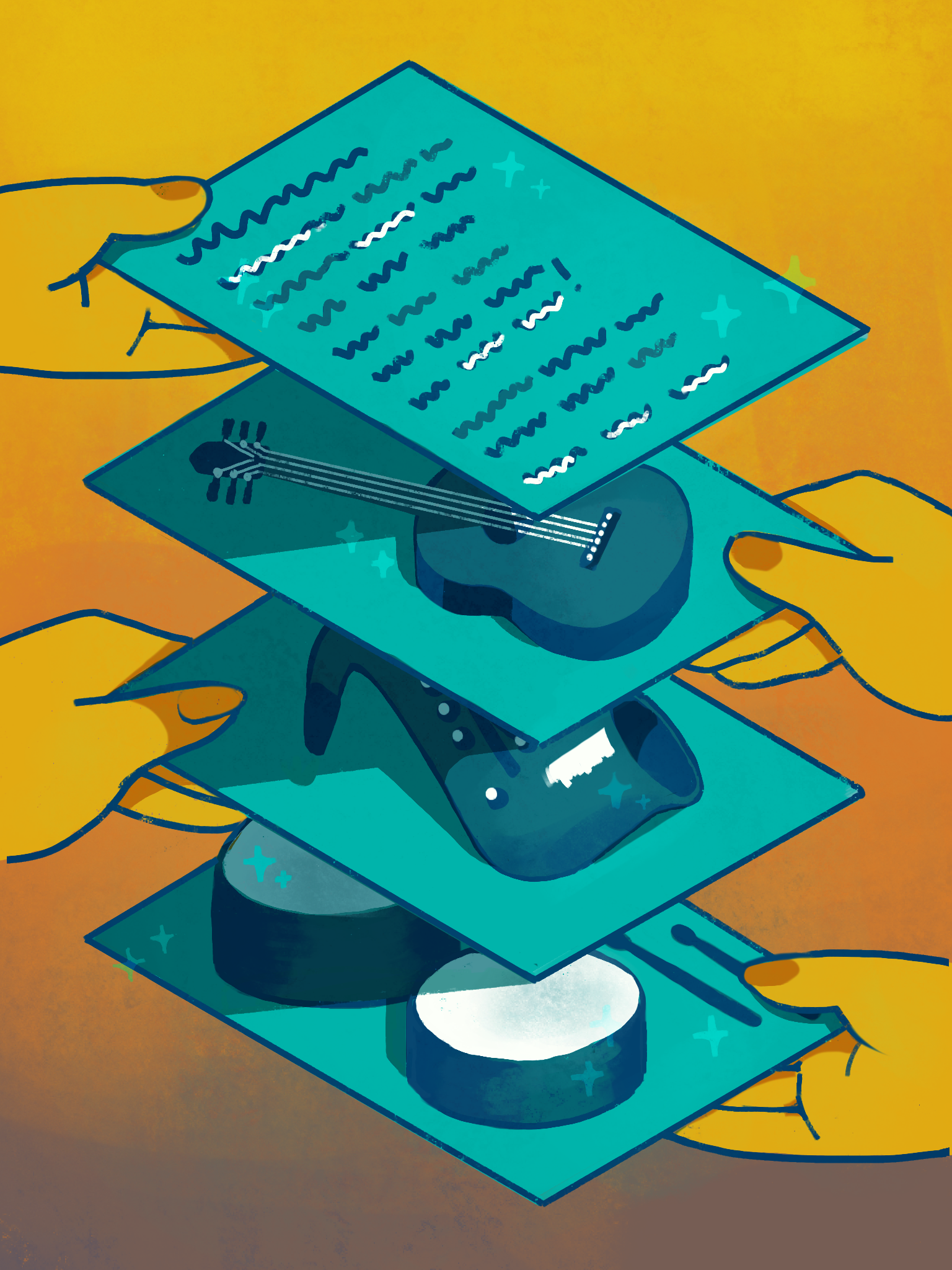Music Club’s ‘Telephone Jams’ call on participants to dial into creativity

(Nghi Nguyen/Daily Bruin)
By Allyson Weissman
May 18, 2020 2:14 p.m.
The Music Club at UCLA’s “Telephone Jam” is passing music through the phone.
Composed of both students and alumni, participants in the project were randomly separated into groups of four to work on their own original track. Each band was provided with the same backing drum track created by the club’s co-president, Dylan Coe. With this foundation, each group member layered their own instrumental or vocal contribution to pass along to the next member until a full song was produced. Graduate student Martha Kriley said Telephone Jams granted her an interactive way to maintain her connection to music during the pandemic.
“Music has always been a big part of how I relax and express myself, so finding a way to do that during virtual learning and social distancing was really important for me,” Kriley said.
As a vocalist, Kriley said she wrote the song and recorded the lyrics. After hearing what her bandmates had added before the track reached her, she said the track’s dreamlike tone served as lyrical inspiration. The song’s title “Sun Glitter” refers to the effect of the sun when it hits the water, which Kriley said underlined the surreal tone of the music and lyrics. The hypnagogic style she strived for hopefully allows listeners to escape the chaos of the pandemic by imagining themselves somewhere else, Kriley said.
[Related Links: UCLA Music Club bands together hobbyist and seasoned artists, creates community]
Contributing to the imaginative tone was Kriley’s bandmate, alumnus Justin Loera who said he saw Telephone Jams as an opportunity to share his music with the UCLA community. Loera was the first of his group to add to the track, and he said his contribution was inspired by Fleetwood Mac. His guitar layer utilizes similar chords as those played by the band’s lead guitarist Lindsey Buckingham, which encouraged Loera’s group to follow in his footsteps with the song’s dreamlike tone. Although Loera said he was able to produce his musical contribution in his ministudio at home, not everyone involved had the same advantage.
“The hardest part about Telephone Jams is since everybody’s at home, not everyone has access to the same equipment,” Loera said. “The sound quality is going to vary a lot depending on different people and what they have available to them.”
While the sound quality could be perceived as an issue, alumnus Sinan Cem Cetin, said the variability is exciting because of the mystery of the final product’s sound. Because he was first in his group to hear the track, Cetin said he was able to experiment with his sound. He initially dipped into the sounds of jazz but realized the genre’s style did not fit the drum track’s rhythm. After trying various styles, he said he decided to go for a garage rock approach, characterized by the bashing of guitars.
“Because I went first, I didn’t know what other people are going to record on top of my track,” Cetin said. “It’s pretty exciting to hear what even happened to the guitar part and what they came up with.”
[Related Links: Band Night allows students to explore new musical sounds in stress-free environment]
Though Kriley said Telephone Jams are an innovative way to make music, there are some disadvantages to this process of composing music. Kriley said Telephone Jams lack the back-and-forth aspect of collaboration, as each person adds their own part without much input from others. Similarly, Loera said he values sitting in a room with other musicians to bounce off lyrical and musical ideas while songwriting, but for now, Telephone Jams are the closest way to work together musically.
However, while the members are not interacting in person, graduate student Swapnil Sayan Saha said producing work with people from diverse musical backgrounds adds to the project’s thrill. Every member has their own distinctive sound, and the activity allows the musicians to put their own touch on a shared piece while still working collaboratively.
“We talked about our process and what we all liked about each other’s tracks, so that was a really great way to bring that social and collaborative aspect back to the process,” Kriley said. “It’s a great way to just get away from our typical studies and collaborate on something else.”


